You might have heard about the holy Badrinath temple, but have you heard about the auspicious locations of Panch Badri? Known to be the landmarks of Lord Vishnu’s life journey, these five temples (as the “panch” in the name suggests) offer a complete devotional experience.
It is based on the life stages, and after completion of the Panch Badri Yatra, devotees have expressed that they felt an elevated sense of consciousness. In case you wish to explore these places in the upcoming season, you are at the right place.
Table of Contents
Panch Badri Location: The Five Temples
The Indian subcontinent is known for its rich heritage in terms of temples, mostly dedicated to the Trimurti (Brahma, Vishnu, and Mahesh). In this regard, the existence of the Panch Badri dates back to the Gupta period. As you plan to visit Panch Badri in the holy cities of Uttarakhand, knowing about the places in advance will surely help. Let us understand what the constituents of Panch Badri are:
1) Vishal Badri
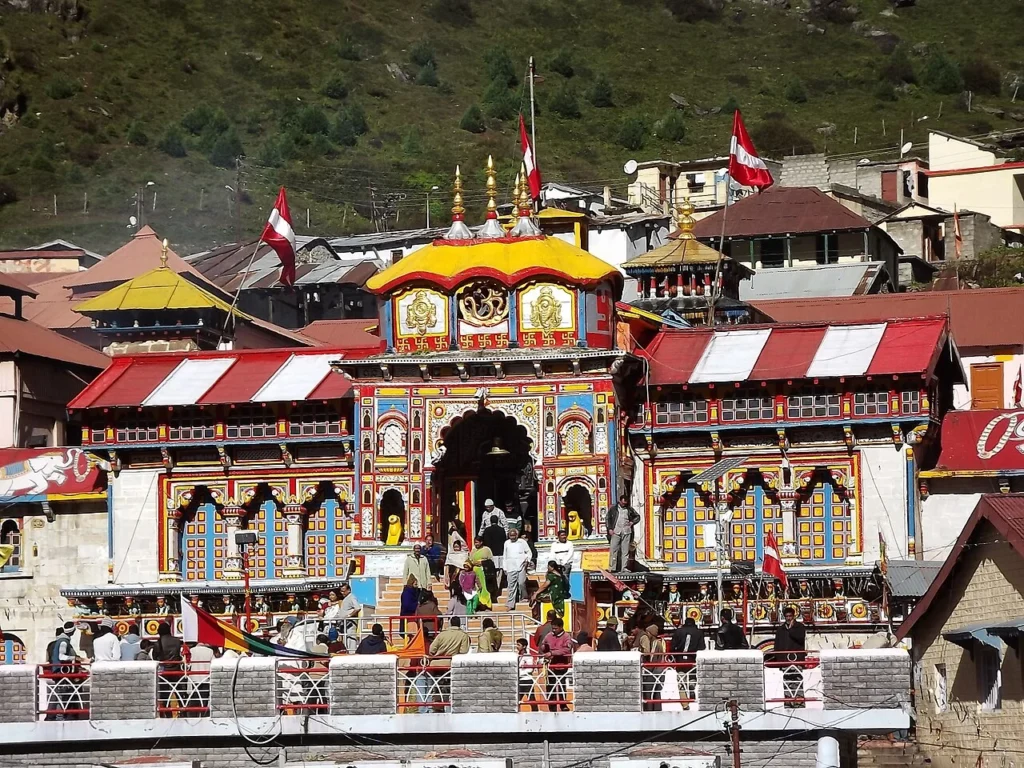
Location: Badrinath town in Chamoli District.
Special features: Lord Badrinarayan can be seen seated in the lotus position, in a meditative state, for the devotees to worship. It is one of the most revered places dedicated to Lord Vishnu, because of its high religious significance. The importance can be understood by the fact that it is part of the Char Dham as well. The idol is carved out of black stone.
Earlier, the area was known as Badarikavana, that is, forest of berries. The story is related to Lord Vishnu meditating over here when his wife saw his state and decided to protect him. The deity is seated in lotus position in the actual temple because of the fact that Lord Vishnu was actually seated in that position when he was meditating at that particular point. To save her husband, Goddess Lakshmi turned into “Badri”, that is, a berry tree in order to offer shade to her meditating husband. While common belief might make you think that it is named after Lord Vishnu, legend holds that it is more about his wife.
2) Yog Dhyan Badri
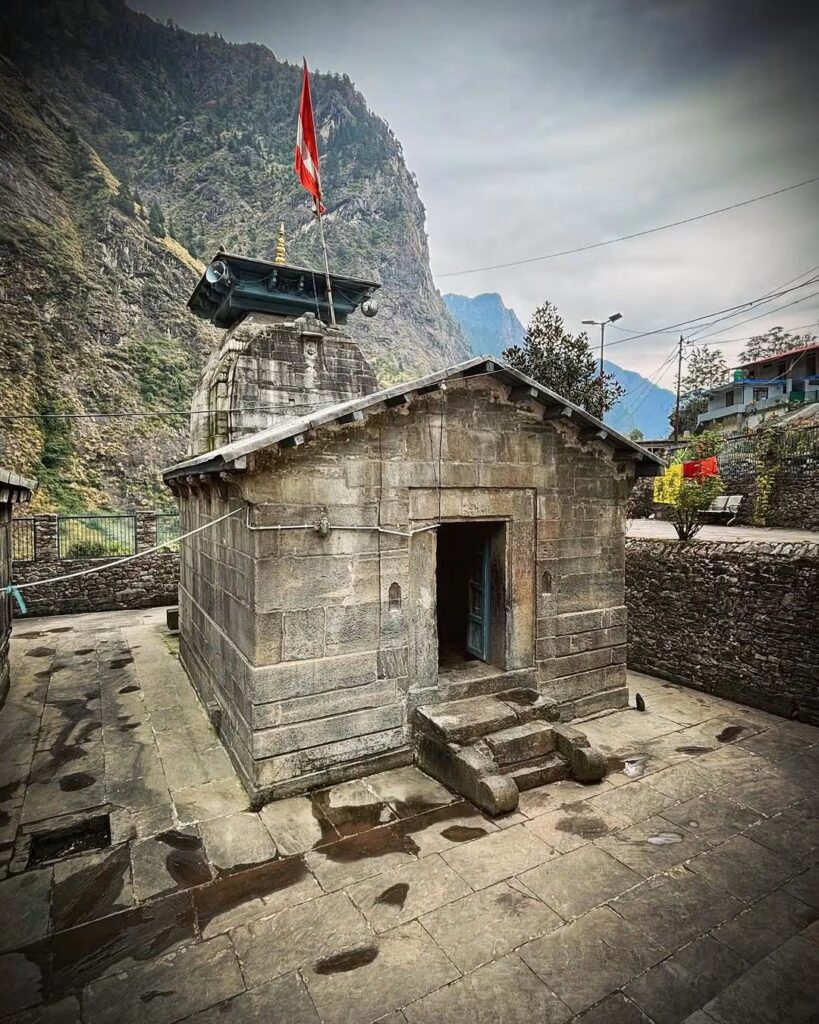
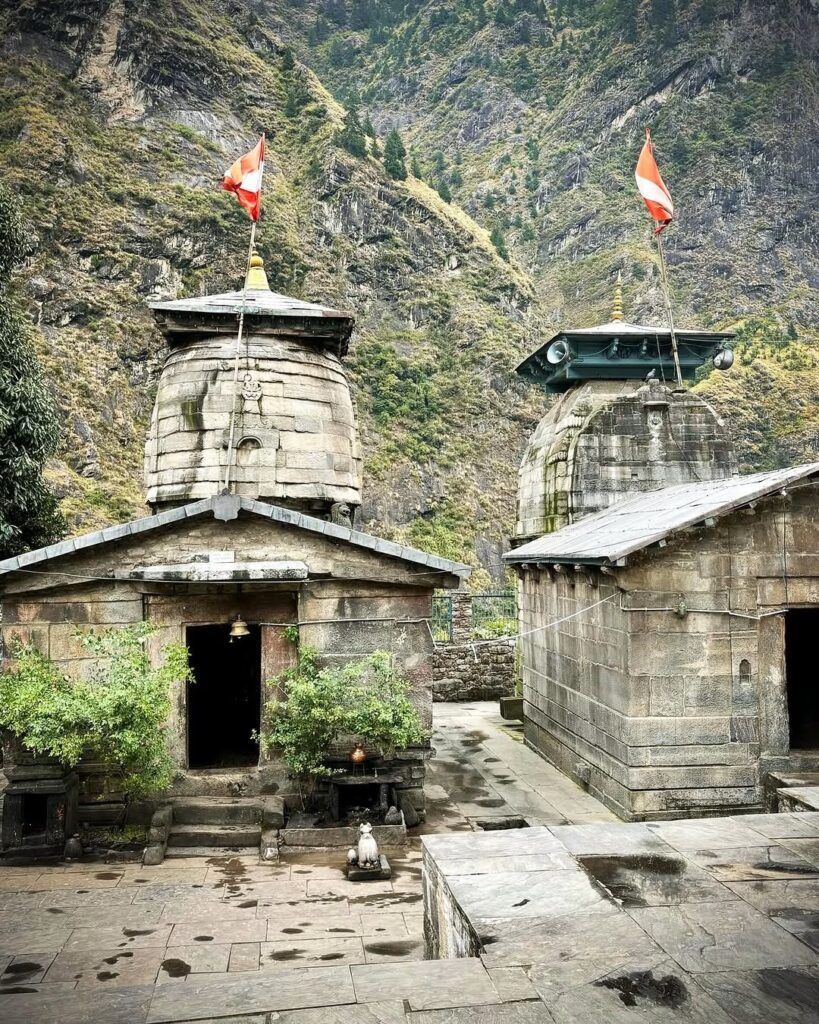
Location: Pandukeshwar village near Govind Ghat. You can visit this temple while going to Badrinath as it is on the way. The nearest landmark is Helang, which is around 12 kms away from this auspicious temple. From Pandukeshwar, there is a small yet beautiful trek downhill, which has steps. You will have to walk down for almost 500 metres to reach the divine abode of Lord Vishnu.
Special features: For people who are on their path to salvation through the Yog Marg, this temple is the epitome of devotion. It is also hailed as the deity with the most peaceful poise, out of the five temples. King Pandu and his meditation has an established link with this temple and the idol was placed here after the successful penance of the king. The most significant factor of the idol is that it is completely made up of bronze. The meditative posture also adds to the peaceful vibe of the area. Further, it is special due to the fact that the festival deity is placed here in winters, popularly known as the Utsav Murti.
3) Bhavishya Badri
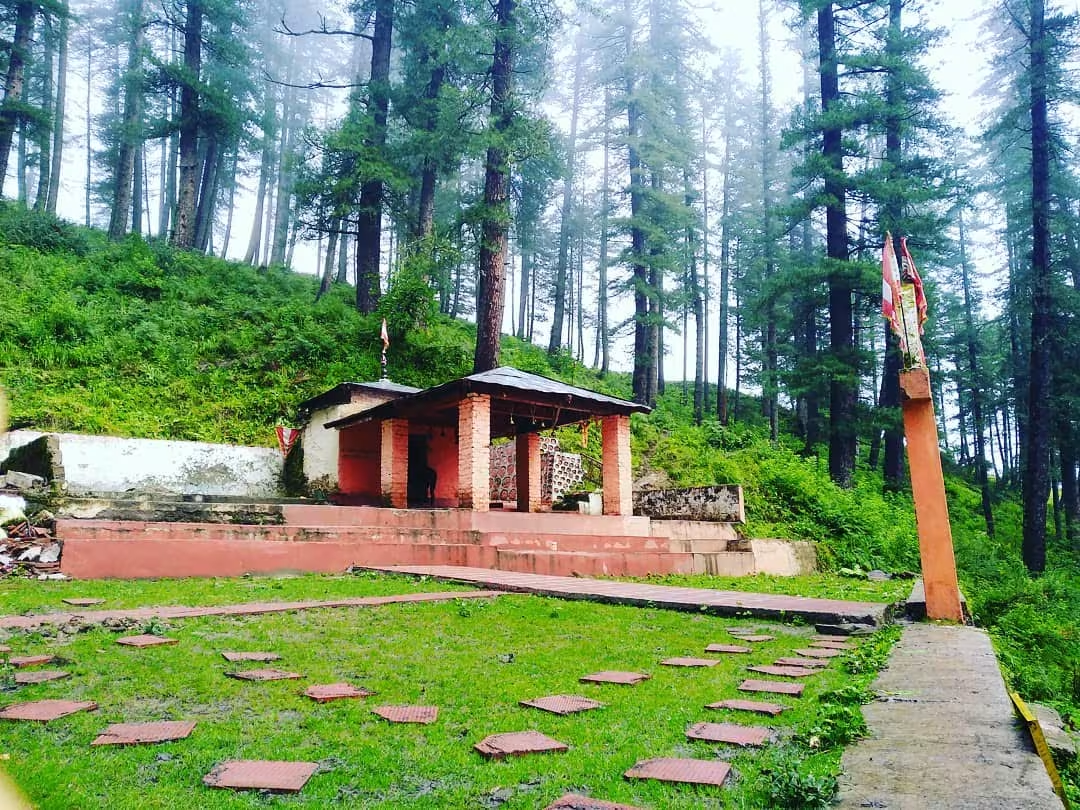
Location: Subhain village near Tapovan. Joshimath is the nearest landmark, and you can reach the temple while ascending towards Lata Malari. Saldhar is the last point you can reach by road, when you travel 17 kilometres from Joshimath towards Malari. From there, you have a moderate trek of 6 kilometres through captivating forests.
Special features: The temple is strategically located to be the abode of Lord Vishnu in future. It is expected that the original Badrinath temple might become inaccessible at some point of time due to the environmental changes and other geographical issues. The foreseeability of Hindu mythology is aptly highlighted by the existence of this temple. The backstory is such that presently, Kaliyuga is going on and after this Yuga finishes, the deity will shift here.
4) Vridha Badri
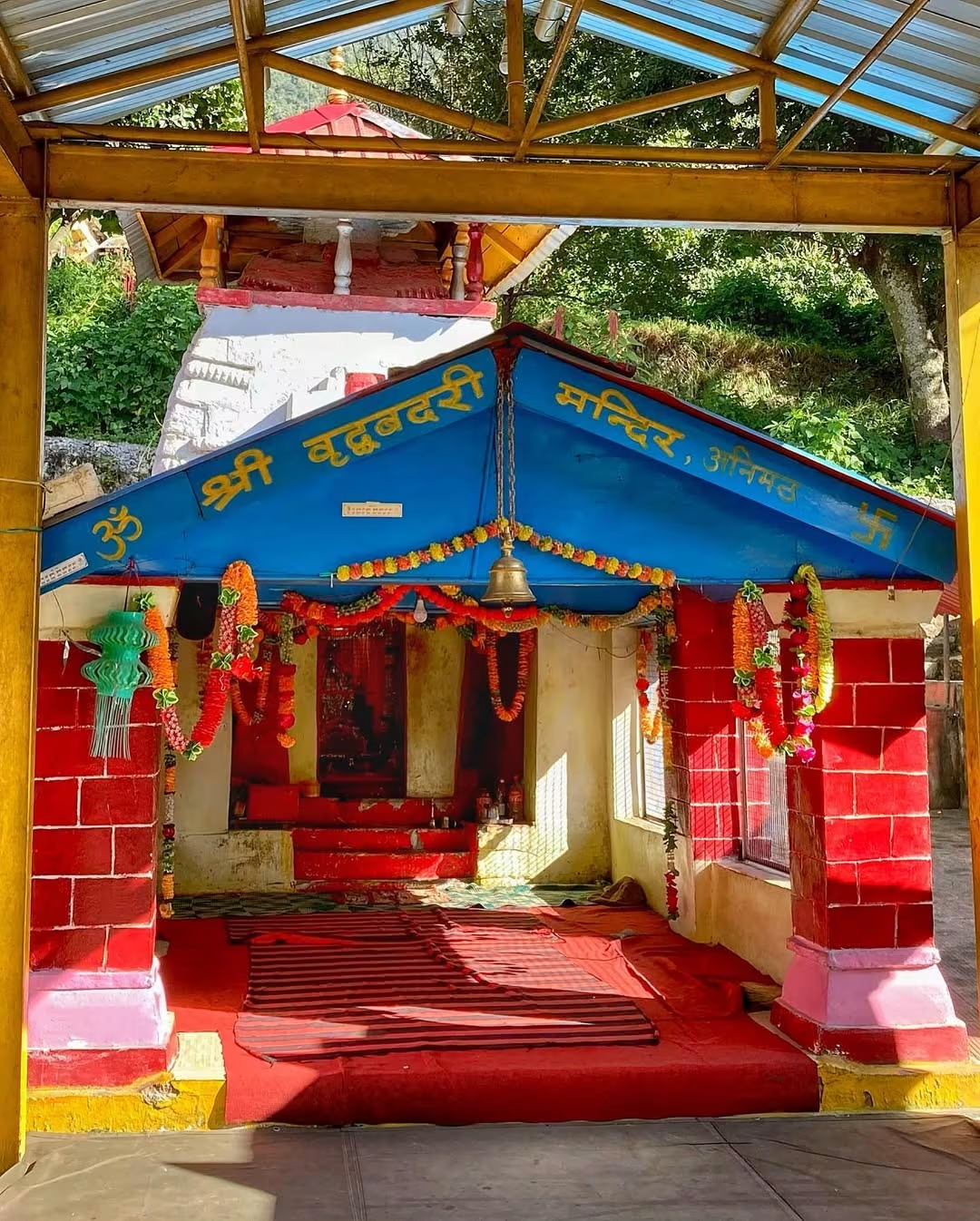
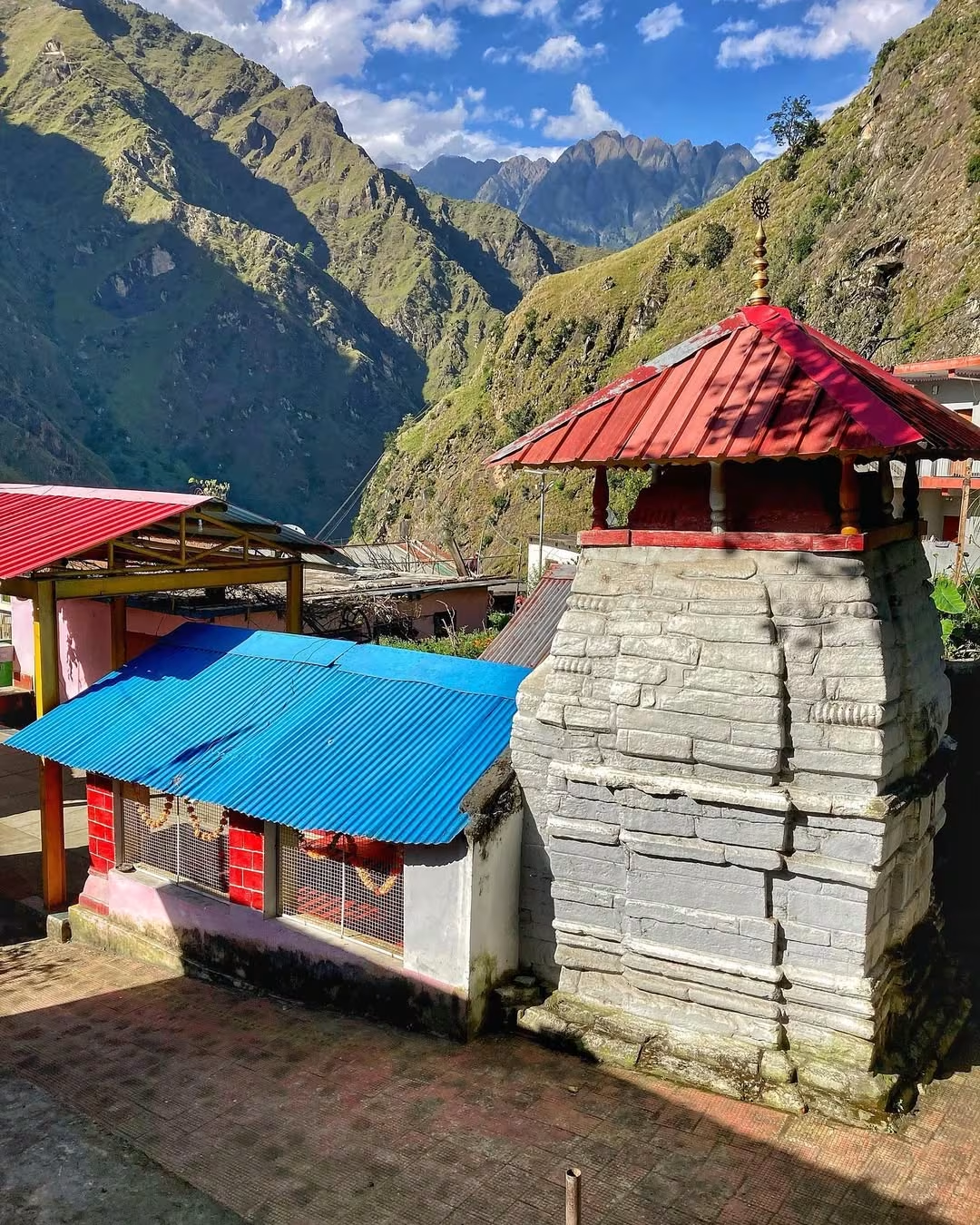
Location: Animath village near Joshimath. The distance between Joshimath and this temple is approximately 7 kilometres. Till the temple, you get shared public transport and the area is easily accessible.
Special features: The temple remains open for the whole year, offering enough time for devotees to reach at their convenience. It is also known as “old Badri”, as the deity is shown in the later stages of life. Moreover, this temple is said to be where Lord Vishnu appeared in his elderly form before Adi Shankaracharya established Badrinath and owes its existence to Naradkunda. The deity is carved using the holy stone of Shaligram, which has its own grace in daylight as well as at night.
5) Adi Badri
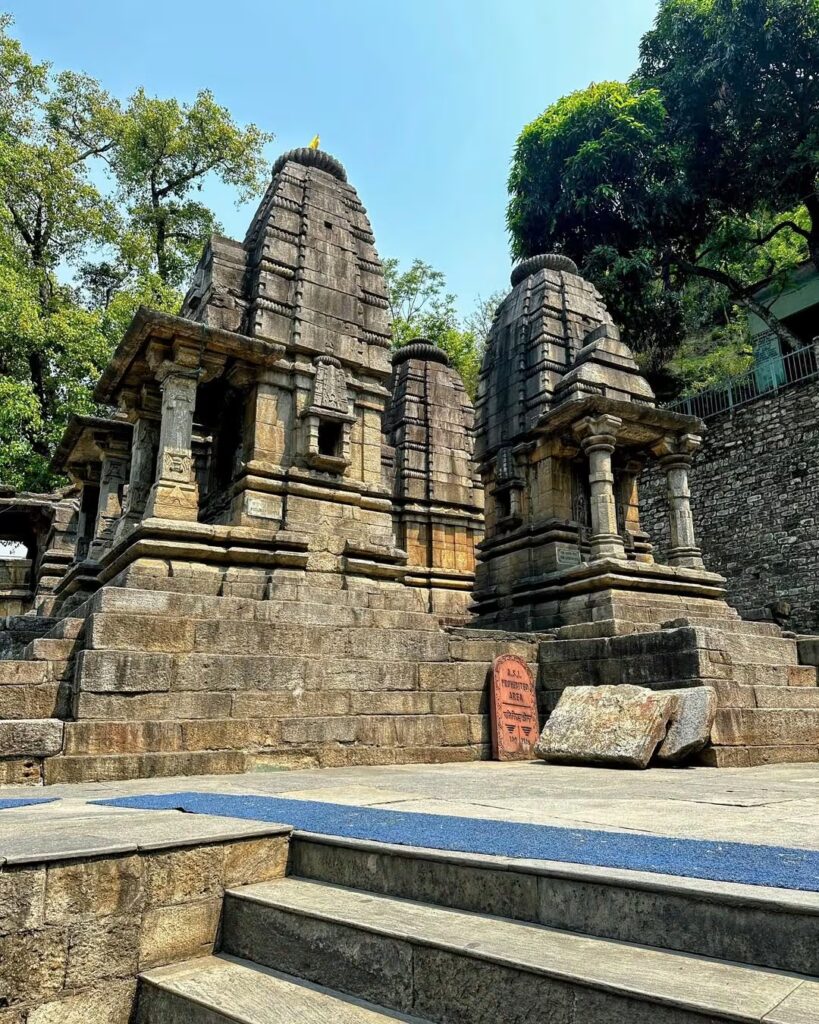
Location: Near Karnaprayag (total distance of 18 kilometres) in Chamoli District. You will reach this temple when you move towards Ranikhet road. No trek required, you can reach the temple by road.
Special features: It is the most ancient Badri shrine in India, which increases the significance manifold. The texts of the Gupta period find its mention and the architecture is equally astounding for people of all faiths. This temple complex consists of 16 small temples built during the Gupta period. It is believed that Lord Vishnu resided here before moving to Badrinath
Spritual Significance of Panch Badri
All five temples offer unique insights into the life and teachings of Lord Vishnu. As per Hindu texts, it is considered that the soul goes through detoxification at a deeper level when one visits these temples in continuation. Blessings from the deity for a successful life ahead serve as an added advantage. The followers of Hinduism consider it as auspicious as the Char Dham Yatra and Panch Prayag Yatra because of the backstory of the temples.
For enthusiasts of History as well, the Gupta style of architecture offers a lot of interesting perspectives. The local people have their own anecdotes as to mythological events taking place on a regular basis. A culturally rich journey is guaranteed, with beautiful forests and cold breeze in the background.
How to Reach Panch Badri Temple
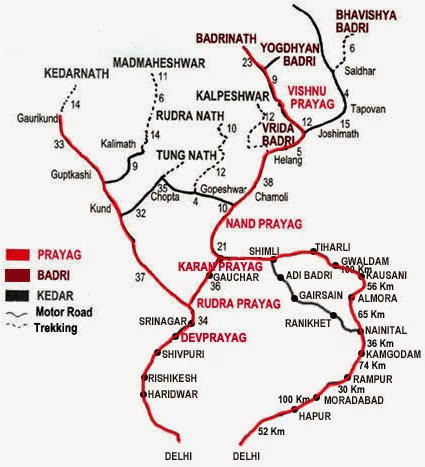
By air:
Reaching Dehradun by air is the first step, and then you can get on your preferred mode of transport. The nearest airport is Jolly Grant Airport in Dehradun, from where you can opt for a private taxi or bus for further journey. The total distance between the airport and Badrinath temple is around 300 kilometres, so you would have to divide your trip accordingly. Further, you will have to reach Joshimath, which is considered the transit point for the Panch Badri Yatra.
By train:
Rishikesh is the nearest railway station, around 290 kilometres away from Badrinath. After reaching the railway station, a combination of bus and taxi can be used. You can cut down on travel time from your city to Rishikesh by opting for the train because further on, all journeys have to be done by road only. Dividing the trip into different modes of transport will add adventure to your Panch Badri pilgrimage and make it a bit less tiresome as well. So why not make reaching Lord Vishnu’s abode worth the experience?
By road:
Through National Highway 7, you can reach your first destination for the Panch Badri Yatra, that is, the Badrinath temple. The connectivity is good and the roads are also in good shape. If you don’t have experience in driving in hilly areas, it is always better to go through local transport. There are a variety of options, ranging from private taxis to public buses. Choose according to your preference and health conditions.
Suggested Route:
- Haridwar/Rishikesh
- Badrinath
- Joshimath (central point, can change the sequence of other temples further on depending on your convenience and preference)
- Yogdhyan Badri through Padukeshwar
- Vridha Badri (landmark is Animath)
- Bhavishya Badri through Saldhar
- Adi Badri through Karnaprayag
Panch Badri Itinerary
The Panch Badri Yatra itinerary, like any other Uttarakhand temple tour, is divided across days. For this Himalayan pilgrimage, you need to have at least a week in hand. Though you can focus on one temple at a time, like the Adi Badri itinerary, if you are planning to visit separately. For covering them all together, we have curated a 7-day Panch Badri itinerary for you:
Day 1: Haridwar/Rishikesh to Pipalkoti
- From the airport or railway station, drive towards Pipalkoti through your preferred mode of transport. It will take 8 to 10 hrs (about 300 kilometres from the airport or Rishikesh railway station), depending on the time of travel.
- If you are driving on your own, make sure to take adequate breaks, and you will find enough places for refreshment en route. For an enhanced experience, plan your breaks in such a way that you glance through Devprayag and Rudraprayag.
- Stay at Pipalkoti for the night.
Day 2: Pipalkoti to the first Panch Badri (Badrinath)
- The morning of day 2, drive to Badrinath and you will reach by lunchtime as it is approximately 80 kilometres from Pipalkoti.
- Check into your hotel near the Badrinath temple. Visit during evening aarti for a once-in-a-lifetime experience, which will make you feel closer to Lord Vishnu.
- For nearby attractions, you can think of exploring Mana Village, which has a lot of history to offer. Stay in Badrinath for the night, and rest well as the real adventures begin on day 3.
Tip: Be mindful of weekends and any auspicious festival dedicated to Lord Vishnu, as the footfall might be high, so plan your visit accordingly for a smooth experience
Day 3: Badrinath to Yog Dhyan Badri to Joshimath
- If you have time in hand, go visit in the early morning of day 3 as well, as the peace and beauty during sunrise time is unmatched.
- Drive to Joshimath, which is around 45 kilometres away.
- If time allows, visit Yog Dhyan Badri before checking into your hotel, as it is in between Badrinath and Joshimath. In case you wish to check in first, you can come back to Yog Dhyan Badri in the evening.
- Stay in Joshimath, hydrate well for the next day (trek incoming).
Day 4: Joshimath to Bhavishya Badri, and back to Joshimath
- In the morning, glance at the beautiful surroundings of your stay and drive to Saldhar. Move towards Tapovan road from Joshimath, for a beautiful 17-kilometre ride through green forests.
- Begin the Bhavishya Badri trek, which is approximately six kilometres. The Subhain village is equally peaceful.
- After paying homage to Lord Vishnu, return to your hotel in Joshimath after the same trek downhill (will take comparatively lesser time so plan your day accordingly).
Day 5: Joshimath to Vridha Badri to Karnaprayag
- Checkout from Joshimath hotel and head on towards Animath, where you can visit Vridha Badri temple.
- The journey is 7 kilometres from Joshimath.
- By afternoon, you can reach Karnaprayag as it is just 85 kilometres from the Vridha Badri temple.
- Do not forget to enjoy the scenic beauty.
- Check into Karnaprayag hotel and wind down for the day.
Day 6: Karnaprayag to Adi Badri to Haridwar/Rishikesh
- Early morning, drive to Adi Badri, which is 17 kilometres from Karnaprayag.
- Visit the temples at your own convenience but keep time in hand.
- Drive back (or take public transportation, whatever be the case) to your origin city of Rishikesh or Haridwar. It will take 5 to 7 hours, so plan accordingly.
Day 7: Return trip
- In case you wish to go for Haridwar or Rishikesh sightseeing, the last day can be utilized for that.
- Ganga aarti, river rafting and visiting ancient temples are suggested activities.
- Once you are done with sightseeing, travel back to your hometown (by air, railway or car) with lots of memories from your Panch Badri Yatra.
Accommodation Options
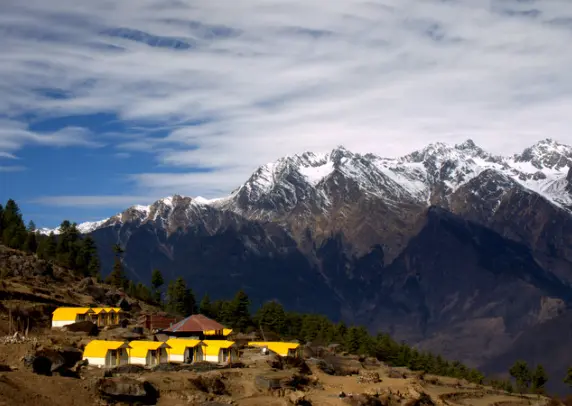
Panch Badri Yatra seems more fulfilling when the accommodation is planned well in advance. If you are going with a Tour Operator like HDT, everything will be taken care of well in advance. Wondering where to stay near which temple? Use the following Panch Badri accommodation guide for reference:
- 1 night in Pipalkoti (near Badrinath), next two nights in Joshimath, and 1 night in Karnaprayag before returning to the original city (Haridwar or Rishikesh). Next day accommodation is optional, depending on your return trip (overnight or daytime). It is better to stay in order to prevent burnout after such a wonderful experience amidst the forests.
- Staying would be most convenient near Badrinath (more options than any other temples that form part of Panch Badri) and Joshimath (central point for Yogdhyan Badru, Vridha Badri and Bhavishya Badri).
- Animath and Karnaprayag have emergency accommodation options for Vridha Badri and Adi Badri respectively.
- Pandukeshwar is another location with limited options because of the remote location.
- Options in Joshimath: Hotel Dronagiri, GMVN TRH Joshimath, and Ishwari Narayani Hotel.
- Options in Pipalkoti: Hotel Mahavir, Hotel Kalyan and Hotel New Vikrant
- Options in Karnaprayag: Hotel Prayag Raj, Shir Krishna Palace, and Hotel JK Laxmi.
Best Time To Visit Panch Badri
The route should be planned well in advance. There are two seasons when it is best to go on a spiritual journey to Panch Badri in Uttarakhand. These are as follows:
Summer Season
From May to pre-monsoon July, the sun is bright during the day, and evenings are marked by a cold breeze. The temperature hovers between 18 degrees to 25 degrees Celsius. This season is the best for enjoying the whole day near the location of the temple. One can reach the temples easily as it is the dry season, with little or no rainfall, which happens occasionally. The recent travellers suggest that for people of old age, this is the most suitable season as the temperatures are moderate and the terrain is safer as compared to other seasons.
Autumn Season
The time before the winter season is just perfect to find solace in the heavenly abode of Lord Vishnu, as the Panch Badri temples are surrounded by snow-clad Himalayas. The ideal months are early September to early November. Temperature hovers around 5 to 15 degrees Celsius.
By the end of this time, some of the temples get closed due to expected snowfall and difficulty in commuting. After this time, it is not safe to travel, for groups and solo travellers alike.
Difference Between Panch Kedar and Panch Badri
The historical roots of Panch Badri in India are quite significant, as it finds reference from the Badrinath temple. At times, Panch Kedar and Panch Badri are considered to be synonymous and often confused by the tourists. Panch Badri has been discussed at length in this article. For Panch Kedar, the trip includes five of the holy temples dedicated to Lord Shiva. Panch Kedar is more famous for longer trips. The components of Panch Kedar:
- Kedarnath ( represents the hump of Lord Shiva),
- Madhyamaheshwar (represents the stomach of Lord Shiva),
- Tungnath (represents the arms of Lord Shiva),
- Rudranath (represents the face of Lord Shiva) and
- Kalpnath (represents the hair of Lord Shiva)
Another peculiar difference lies in the significance. While Panch Kedar is about the five body parts of Lord Shiva (mostly in the bull avatar), Panch Badri is more concerned about the life stages of Lord Vishnu, extending even to the future. The combined trip of Panch Kedar and Panch Badri forms the bucket list of many Hindu devotees.
FAQ’s
1) Is Panch Badri one temple?
No. Panch Badri is a group of five temples dedicated to Lord Vishnu, depicting all five stages of life that one goes through. The area is collectively known as Badri Kshetra, with a starting point at Badrinath and an ending point at Nandprayag.
2) What is the importance of Panch Badri Yatra in Hindu mythology?
Once a person has covered all five temples belonging to Panch Badri, he or she is believed to have cleansed all sins and reached closer to salvation (also called Moksha).
3) How difficult is Panch Badri Yatra in Uttarakhand?
It is not difficult if you have the right guidance at hand. Physical fitness is also one of the most prominent factors while deciding the difficulty level. In terms of difficulty level, Bhavishya Badri ranks the highest due to the difficult trekking route uphill. On the other hand, you will find motorable roads till the locations of Adi Badri as well as Badrinath. Depending on the amount of time available and the age of travellers, the trip can be divided into two parts.
4) What is the ideal time to visit Panch Badri?
For the best experience and easy motorable roads, May to June is the ideal time to visit Panch Badri temples. In the winter months, one can visit till the end of October, after which the weather becomes unfavorable. You can visit Vridha Badri at all times, because it is not closed for the winter season.
5) Can one find affordable accommodation near Panch Badri?
Yes, a variety of options like guesthouses and hotels can be found. These are available in medium range, three-star as well as other affordable options for college students who might plan to visit. Joshimath and Badrinath have the most accessible stay options. The availability depends on the footfall at the time of visit and pre booking is also allowed.
6) How to reach Panch Badri in Uttarakhand?
Begin with Badrinath, then cover Yog Dhyan Badri and Bhavishya Badri. Finish the trip with Vridha Badri and Adi Badri. Keeping in mind the Panch Badri map, with all five temples at different locations, one needs to plan the trip well in advance.
The Panch Badri name in itself is enough to be a conversation starter for people who indulge in spiritual tours on a regular basis. Once you have made up your mind to visit these holy places, make sure to carry the necessities in order to avoid any issues on reaching the temples. The aura is such that the regular visitors at times prefer to visit these over the actual Char Dham Yatra, as the latter has a diverse route and is time-consuming as well.
Further, there is an option to extend your trip to include the Sapta Badri trail as well, which is even more captivating in terms of location and resplendent beauty of the temples. While individual preferences might vary, one must try to visit all these in one go for a spiritually powered experience coupled with peace of mind. Last but not least, respecting the local customs and beliefs of people should be your topmost priority, in addition to maintaining hygiene in the areas surrounding the Panch Badri.

Need help planning your Panch Badri Yatra? We at Himalayan Dream Treks are well known for creating customized travel according to our customers’ needs. Contact us at info@himalayandreamtreks.in or +91 80896 93825.
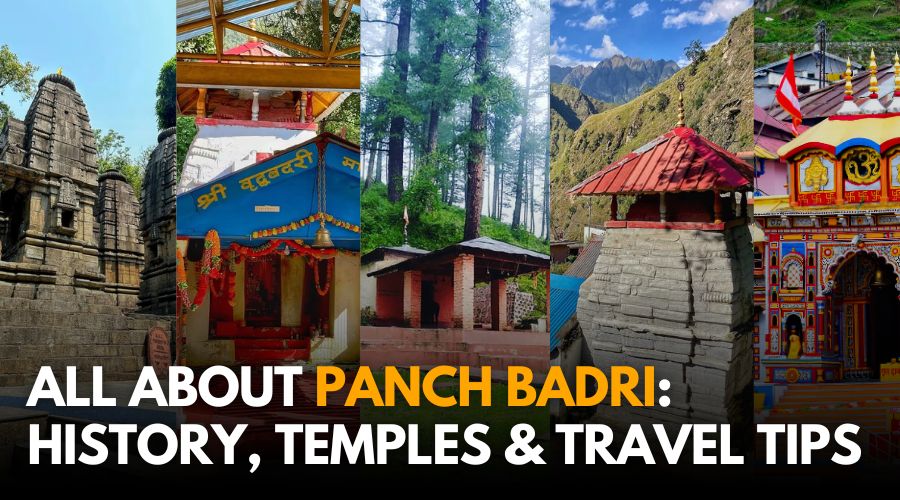
Leave a Comment